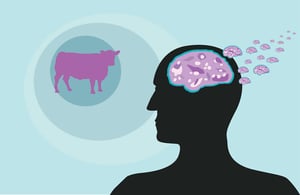Do you remember the mad cow syndrome and especially its human version, Creutzfeldt Jakob’s disease? After the emergencies of about twenty years ago, we do not hear about it anymore. Yet these types of diseases, triggered by prions (that is, by altered proteins able to spread from one individual to another and to infect them), continue to hit and kill different animal species and, albeit very rarely, even humans (it is estimated that one death per 10,000 is attributed to prions). But, so far, these “infectious particles” were largely mysterious. It was not clear, above all, how they managed to pass from one cell to another, then giving way to their dangerous activity. Now, however, researchers at the Case Western Reserve School of Medicine in Cleveland (US) have published the results of an important study in the journal Nature Communications, which could significantly contribute to shedding new light on the “mechanisms” of prions. In fact, American pathologists have succeeded in creating a human prion in the lab, inserting the DNA of a mutated protein into a strain of Escherichia coli bacteria (and then producing the altered protein, i.e. the prion, to these bacteria).
In the past few years no such attempt had been successful (some international teams had succeeded in reproducing animal prions, but different from human ones). The chance of having, now, theoretically unlimited quantities of a human prion protein will allow us to study in detail how these particles work, and will be able to open doors to possible therapies (currently almost nonexistent).
American researchers have already discovered, for instance, that the most “critical” and dangerous part of the prion is not, as we thought, the one in which the protein is altered, deformed (compared to normal proteins), but one of the two ends, named C-terminal: this is the point that allows the prion to pass from one cell to another. And that’s one of the points on which the search for new drugs will focus.

